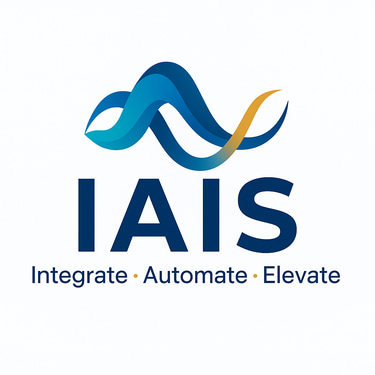AI Tool Implementation & Training
Get the Right Tools, Fast—And Train Your Team to Use Them
Fast-Track Your AI Adoption
Fast-tracking tool implementation & training
AI is advancing at a rapid pace, and most businesses already have countless tasks that could be simplified through the right tools. The good news? You don’t need to reinvent the wheel, or start from scratch. Many solutions can be deployed quickly using proven platforms, giving you results in days instead of months.
With thousands of off-the-shelf AI tools emerging, the challenge is knowing which ones truly fit your needs. That’s where we come in. We identify the right tools for your business, implement them seamlessly, and train your team to use them effectively; ensuring adoption translates into real impact, not wasted subscriptions.
Why it matters
AI offers clear advantages: streamlined workflows, reduced costs, smarter decisions, and faster execution. For many businesses, even small wins create immediate impact—helping employees save time, executives see results, and organizations gain momentum.
If your competitors are already using AI and you’re not, it’s only a matter of time before they surpass you in efficiency, capabilities, and profit margins. If they haven’t started yet, this is your opportunity to gain a decisive competitive edge.
Single-Use Tools vs. AI Agents
Not all AI is created equal. Some tools are designed for a single, focused task, while others act as agents, capable of adapting and executing multi-step processes toward a defined goal. Understanding the difference helps businesses choose the right level of integration.
AI Agents
AI Agents go beyond responding: they take action, sequence tasks, and adapt based on feedback. They operate more like digital employees, handling ongoing processes autonomously.
Examples:
A finance agent that receives invoices, validates them against purchase orders, records them in your ERP, and routes them for payment approval.
A sales agent that scans inbound leads, updates your CRM, drafts outreach emails, schedules demos, and alerts reps to hot prospects.
A customer service agent that handles questions, resets passwords, issues refunds, and escalates complex cases when necessary.
An HR agent that screens incoming resumes, ranks top candidates, schedules interviews, and sends automated updates to applicants.
An IT support agent that monitors helpdesk tickets, troubleshoots common issues, and escalates technical requests it can’t resolve.
An operations agent that tracks inventory levels, predicts shortages, and automatically initiates reorders.
A marketing agent that drafts social media posts, schedules campaigns, analyzes engagement, and adjusts future content strategy.
A compliance agent that reviews documents, flags risks, and ensures reporting meets regulatory requirements.
The Big Difference
Single-use tools give you efficiency at the task level. AI Agents deliver impact at the workflow level; freeing people to focus on higher-value work while the system keeps running in the background.
Single-Use Tools
These are task-specific applications that deliver quick wins with minimal setup. They are powerful, but typically require a human to initiate each use.
Examples:
A chatbot that answers basic customer FAQs from your company’s knowledge base
A grammar checker that reviews written content for errors and clarity
A transcription app that converts meeting conversations into text notes
A summarizer that condenses long reports into key takeaways
An invoice scanner that extracts amounts, dates, and vendor info for accounting
An email assistant that drafts short replies or organizes your inbox
A scheduler that proposes meeting times based on availability
An image editor that removes photo backgrounds in a single click
A marketing assistant that generates social media captions or ad variations
A resume screener that highlights candidates who meet job criteria
An expense tool that automatically categorizes receipts by type
A sales generator that produces a customized first-draft proposal from a template without duplicate data entry
AI is the great equalizer, allowing small and mid-sized businesses to compete with industry giants like never before.

